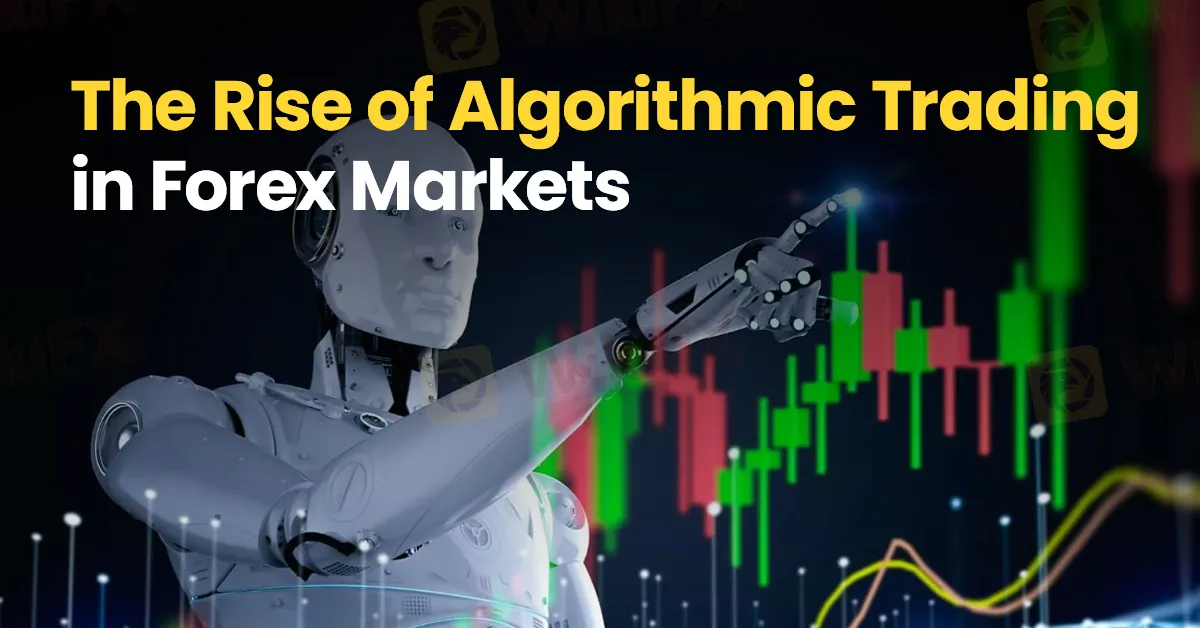简体中文
繁體中文
English
Pусский
日本語
ภาษาไทย
Tiếng Việt
Bahasa Indonesia
Español
हिन्दी
Filippiiniläinen
Français
Deutsch
Português
Türkçe
한국어
العربية
The Rise of Algorithmic Trading in Forex Markets: Opportunities and Risks
Abstract:Over the past decade, the integration of technology into financial markets has revolutionized forex trading. Algorithmic trading, driven by complex mathematical models and real-time data, has become a cornerstone of modern trading strategies. This article explores the transformative impact of algorithmic trading on forex markets, as well as the opportunities and risks it presents.

Introduction
Over the past decade, the integration of technology into financial markets has revolutionized forex trading. Algorithmic trading, driven by complex mathematical models and real-time data, has become a cornerstone of modern trading strategies. This article explores the transformative impact of algorithmic trading on forex markets, as well as the opportunities and risks it presents.
Opportunities Presented by Algorithmic Trading
Algorithmic trading leverages advanced computer programs to execute trades at speeds and frequencies beyond human capability. This automation allows traders to capitalize on minor price fluctuations, execute large volumes of trades in a fraction of a second, and minimize human error. Moreover, algorithms can process vast amounts of data—from historical trends to real-time news—providing a significant edge in a competitive market.
The rise of machine learning has further enhanced these systems, enabling them to adapt to market changes and refine strategies based on past performance. For institutional traders and even sophisticated retail investors, this technology promises higher returns through improved efficiency and predictive power.
Risks and Challenges
However, algorithmic trading is not without its challenges. High-frequency trading systems can amplify market volatility, sometimes triggering abrupt price swings or flash crashes. The reliance on automated systems also brings cybersecurity risks, as even a minor glitch or hacking attempt can lead to significant financial losses. Moreover, the complexity of these algorithms can make it difficult for regulators to monitor and manage systemic risk.
Transparency remains a critical concern. While algorithms operate based on predefined rules, their decision-making processes are often opaque, leaving room for unanticipated outcomes during periods of market stress.
Conclusion
The evolution of algorithmic trading has reshaped the forex market landscape, offering unprecedented speed and efficiency. Yet, as traders harness the power of automation, they must also navigate the inherent risks. Balancing innovation with robust risk management and regulatory oversight is essential for sustaining a healthy, dynamic trading environment.

Disclaimer:
The views in this article only represent the author's personal views, and do not constitute investment advice on this platform. This platform does not guarantee the accuracy, completeness and timeliness of the information in the article, and will not be liable for any loss caused by the use of or reliance on the information in the article.
Read more

What Happens If You Trade on Illegal Forex Platforms in India?
There are many illegal platforms that offer financial services to clients. These scammers hide the risks involved because their main goal is to steal your money. That’s why it’s so important to understand the dangers of trading on illegal forex platforms

Exposing Trade Capital Limited - Siphoning Millions, Restricting Withdrawals, Charging Extra Fees
Trade Capital Limited is in the news for conducting bad practices as a forex broker. Check out the unethical practices employed by it to scam investors in this article.

5 Serious Warnings About Mirrox! You Can’t Afford to Ignore
Pay Attention! This is a serious warning you shouldn't ignore. Check out this article and know the 5 red flags about the Mirrox that every trader must be aware of.

FXPRIMUS: 5 Things They Don’t Want You to Know
Only scam brokers never disclose the risks present in their trading platforms to their clients. They hide all red flags and aggressively promote their services and products. In this article, you’ll discover the 5 major warnings about FXPRIMUS that you must know before choosing this forex broker .
WikiFX Broker
Latest News
Global stock markets are calling Trump's bluff on tariffs
Trump's tariffs overshadow the pomp and pageantry as Macron meets King Charles
Boeing delivers most airplanes since late 2023 after ramping up 737 Max output
Inflation expectations drift back down to pre-tariff levels, New York Fed survey shows
10 Unlicensed Brokers Exposed – Check Now to Stay Safe!
Exposed: Ibell Markets - A Scam Broker That Does Not Allow Withdrawals
Gold Prices to Fluctuate This Week Amid July 9 Tariff Deadline, Fed Policy
America's Deficit Reckoning: How the U.S. debt spiral could spark a crisis
Treasury yields hold steady as Trump extends tariff deadline
Asia-Pacific markets mostly rise as investors assess Trump's steep tariffs
Currency Calculator


